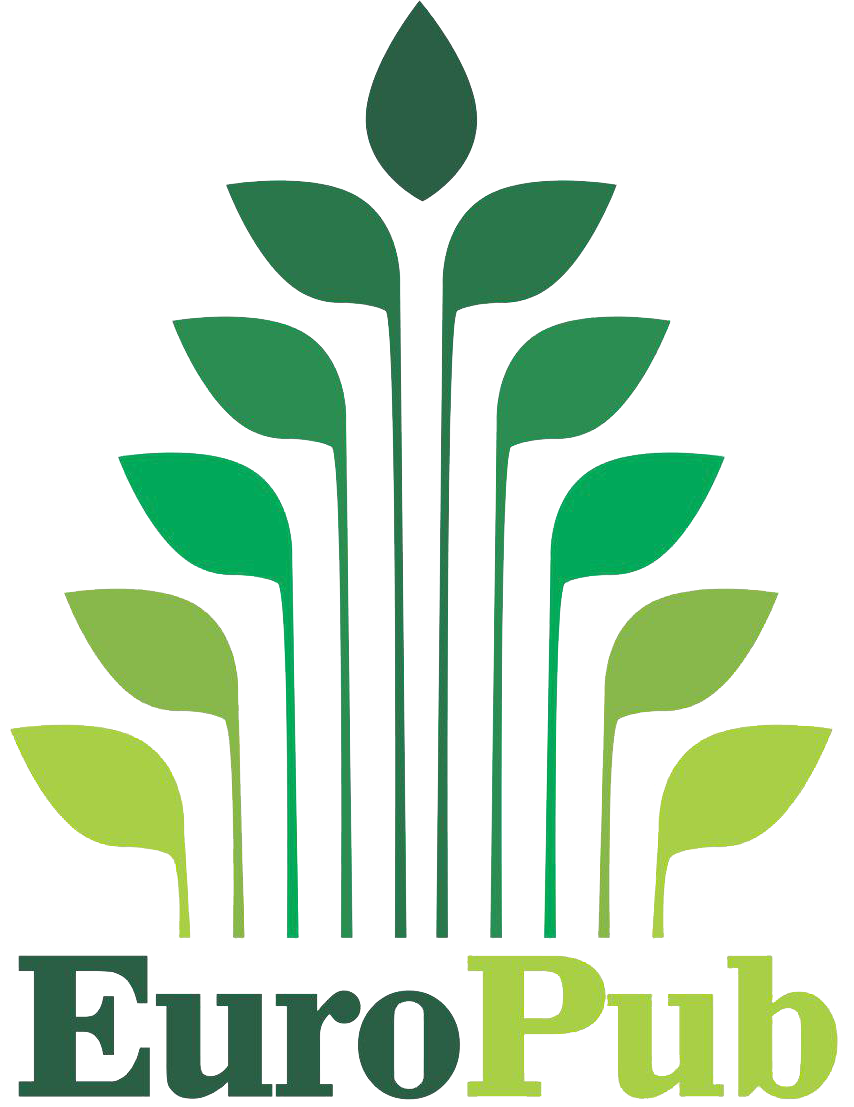Изменчивость толщины и массы коры березы по длине ствола
DOI:
https://doi.org/10.37482/0536-1036-2019-2-32Ключевые слова:
береза пушистая, диаметр ствола, возраст дерева, кора, берестаАннотация
Благодаря особым свойствам кора березы, береста, находит широкое применение в строительстве, фармакологии, медицине, косметологии и других отраслях экономики. Объект исследования – береза пушистая (Betula pubescens Ehrh.). Состав древостоя – 5Б3Ос2Олс1Е, средний диаметр стволов – 21,5 см, средняя высота древостоя – 22,5 м, относительная полнота – 0,7, класс бонитета – II, запас – 220 м3/га. Цель исследования – установить изменчивость характеристик коры березы по длине ствола в зависимости от его диаметра и возраста дерева. Для анализа было спилено 9 модельных деревьев березы разных ступеней толщины. Из ствола на высоте 0,3; 1,3; 2,0 м и далее через каждые 2,0 м выпиливали образцы (диски) толщиной 2...3 см. Диски взвешивали в свежем состоянии, после чего от них отделяли и взвешивали сначала бересту, а затем флоэму. Все фракции высушивали до воздушно сухого состояния и снова фиксировали массу. По итогам второго взвешивания определяли влажность образцов, содержание коры, бересты и флоэмы в общей массе образца. Установлено, что толщина, масса, влажность флоэмы и бересты изменяются по высоте ствола с определенной закономерностью. Максимальное содержание флоэмы и бересты у всех модельных деревьев отмечается в верхней трети ствола, в зоне кроны, – соответственно 16,0...21,0 и 4,0...7,0 %, несколько меньше – в комлевой части. Минимальное содержание этих фракций характерно для бессучковой зоны ствола: соответственно 7,0...9,0 и 2,0...3,0 %. Масса и толщина коры закономерно уменьшаются от комля к вершине, но имеются и исключения для образцов, взятых в местах ответвлений, особенно в местах прикрепления толстых ветвей. В этих зонах толщина и масса коры всегда больше по сравнению с зонами, расположенными ниже или выше по стволу. В среднем на флоэму приходится 12,4 % от массы древесины, на бересту – 3,5 %. Влажность флоэмы и бересты также изменяется по высоте ствола, при этом получены закономерности, аналогичные изменению массы и толщины этих фракций. Самая высокая влажность бересты и флоэмы отмечена в зоне кроны, минимальная – в штамбовой части ствола. Во всех случаях влажность флоэмы выше, чем у древесины и бересты: соответственно 147,0; 131,2 и 105,8 %. Показано, что чем меньше воз-раст модельных деревьев, тем выше влажность бересты и флоэмы. Полученные данные позволяют более точно определять объем коры и запас бересты. Учитывая влажность бересты и коры в целом, можно более корректно оценивать долю этих фракций от общей массы ствола.
Для цитирования: Грязькин А.В., Беляева Н.В., Данилов Д.А., Ванджурак Г.В., Хунг Ву Ван. Изменчивость толщины и массы коры березы по длине ствола // Лесн. журн. 2019. № 2. С. 32–39. (Изв. высш. учеб. заведений). DOI: 10.17238/issn0536-1036.2019.2.32
Скачивания
Библиографические ссылки
Абатуров Ю.Д., Зворыкина К.В., Ильюшенко А.Ф. Типы березовых лесов центральной части южной тайги. М.: Наука, 1982. 156 с.
Веприкова Е.В., Терещенко Е.А., Чесноков Н.В., Кузнецов Б.Н. Использование бересты коры березы для получения сорбционных материалов // Журн. Сиб. федер. ун-та. Химия. 2012. Т. 5, № 2. С. 178–188.
Винокурова Р.И., Трошкова И.Ю. Изменчивость накопления бетулина и суберина в бересте Betula pendula Roth. в зависимости от географической зональности // Лесн. журн. 2008. № 3. С. 126–130. (Изв. высш. учеб. заведений).
Горобец А.И. Недревесная продукция леса. Основы лесохимических производств. Воронеж: ВГЛТА, 2012. 82 с.
Грязькин А.В., Смирнов А.П. Недревесная продукция леса: учеб. пособие. СПб.: Изд-во Политехн. ун-та, 2008. 336 с.
Демаков Ю.П., Смыков А.Е., Денисов С.А. Структура и динамика березняков республики Марий Эл // Вестн. Марийского гос. техн. ун-та. Сер.: Лес. Экология. Природопользование. 2009. № 1. С. 5–18.
Денисов С.А. Динамика формационной структуры березняков в связи с их онтогенезом в различных эдатопах в среднем Поволжье // Вестн. Марийского гос. техн. ун-та. Сер.: Лес. Экология. Природопользование. 2009. № 3. С. 13–27.
Загреев В.В., Сухих В.И., Швиденко А.З., Гусев Н.Н., Мошкалев А.Г. Общесоюзные нормативы для таксации лесов, 1992.
Лигостаева Ю.В. Фармакогностическое исследование бересты и перспективы ее использования в медицине: автореф. дис. ... канд. фармацевт. наук. Самара, 2015. 24 с.
Радькова Е.А. Комплексная эколого-гигиеническая оценка экстракционной переработки коры березы: автореф. дис. … канд. мед. наук. СПб., 2007. 24 с.
Dehelean C.A., Şoica C., Ledeţi I., Aluaş M., Zupko I., Gǎluşcan A., CintaPinzaru S., Munteanu M. Study of the Betulin Enriched Birch Bark Extracts Effects on Human Carcinoma Cells and Ear Inflammation // Chemistry Central Journal. 2012. Vol. 6, no. 1. Pp. 1–9. DOI: 10.1186/1752-153X-6-137
Fulvio F.D., Kroon A., Bergström D., Nordfjell T. Comparison of Energy-Wood and Pulpwood Thinning Systems in Young Birch Stands // Scandinavian Journal of Forest Research. 2011. Vol. 26, iss. 4. Pp. 339–349. DOI: 10.1080/02827581.2011.568951
Gryazkin A.V., Beliaev V.V., Beliaeva N.V., Petrik V.V., Kuznetsov E.N., Shakhov A.G. The Logging Waste as Inexhaustible Resource for Alternative Energy // Thermal Science. 2017. Vol. 21, iss. 2. Pр. 1135–1142. DOI: 10.2298/TSCI150306047G
Laszczyk M. Triterpentrockenextrakt aus Birkenkork (Betula alba cortex). Pforzheim, 2007. 157 p.
Sami A., Taru M., Salme K., Jari Y.-K. Pharmacological Properties of the Ubiquitous Natural Product Betulin // European Journal of Pharmaceutical Sciences. 2006. Vol. 29, iss. 1. Pp. 1–13. DOI: 10.1016/j.ejps.2006.04.006
Skuterud R., Dietrichson J. Budburst in Detached Birch Shoots (Betula pendula) of Different Varieties Winter-Stored in Darkness at Three Different Temperatures // Silva Fennica. 1994. Vol. 28, no. 4. Pp. 233–241. DOI: 10.14214/sf.a9176
Taipale H.Т., Lapinjoki S.P. Use of Evaporative Light-Scattering Mass Detection in HPLC of Triterpenes in the Bark Resin of Betula Species // Phytochemical Analysis. 1991. Vol. 2, no. 2. Pp. 84–86. DOI: 10.1002/pca.2800020209












